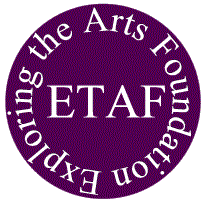|
Start This Feature At
Its Beginning |
|
|
myth and its cousins
The term myth is often used (and misused) in ways that belie its
original, primary, and most essential meaning. Because this misuse has
become widespread, many renowned and experts and authoritative texts have come to
accept these deviations as valid, even though they may tend to rob the word
of much of its meaning, power, and punch. Such "misinterpretations" include:
|
 |
|
The hero Beowulf from the legend of the same
name |
- A fiction or half-truth.
- An imaginary or fictitious story, person, or thing.
- Any invented story, idea, or concept.
- An unproved or false collective belief, especially one that is used to
justify an ideology or social institution.
- A story, theme, object, or character regarded as embodying an aspect
of a culture, such as a movie star whose fame turned her into a popular
myth.
Here, The Muse presents a definition of myth with the object of
distinguishing the real thing from the deviations:
Myth—A traditional or
legendary story, typically ancient, usually concerning some being or hero
or event, with or without a determinable basis of fact or a natural
explanation, especially one that is concerned with deities or demigods and
explains some practice, rite, or phenomenon of nature or human nature.
A myth is a story, theme, object, or character that embodies an aspect
of a culture or of the human psyche. It may deal with supernatural beings,
ancestors, or heroes in a way that serves as a fundamental type in the
world view of a people, as by explaining aspects of the natural world or
delineating the psychology, customs, or ideals of a society. Myths relate
paradigmatic conditions and situations experienced by gods, heroes, or
superhuman beings that are outside ordinary human life yet basic to it. These extraordinary events are usually set in a time that is outside of
ordinary time—at creation, in prehistory, or,
as with the famous Star Wars movie series,
in the far distant future.
To be a true myth, a literary work must exhibit all three of myth's key
characteristics—its literary form, purpose, and
intended audience. If it has all three, it's a myth.
Cousins of myth are sometimes confused with true myth because they share
one or two of these defining mythical characteristics, not all three.
Some genre-cousins of myth not to be confused with myth:
Fairy tale—A story, usually for
children, about elves, hobgoblins, dragons, fairies, or other magical
creatures.
Folk tale—A tale or legend originating and
traditional among a people or folk, especially one forming part of the
oral tradition of the common people. Also, any belief or story passed on
traditionally, especially one considered to be false or based on
superstition.
Fable—A short tale intended to teach a
moral lesson, often with animals or inanimate objects as characters. A
didactic narrative, moral fable, or allegory.
Fantasy—Fiction characterized by highly
fanciful or supernatural elements. An imaginative or fanciful work,
especially one dealing with supernatural or unnatural events or
characters.
Fiction—The class of literature comprising
works of imaginative narration, especially in prose form, such as novels,
short stories, or detective fiction. An imagined or made-up story. An
imaginary thing or event, postulated for the purposes of argument or
explanation.
Legend—a
non-historical or unverifiable story handed down by tradition from earlier
times and popularly accepted as historical. The body of stories of this
kind, especially as they relate to a particular people, group, or clan. A
collection of stories about an admirable person, often exaggerated or
false.
Urban legend—a modern story of obscure
origin and with little or no supporting evidence that spreads
spontaneously in varying forms and often has elements of humor,
moralizing, or horror. Are there alligators living in the New York City
sewer system or is that just an urban legend?
Nursery rhyme—a
short, simple, often fanciful poem or song for very young children.
Tall tale—an
exaggerated lie, usually humorous, in story form. The best tall tales
are exaggerated so that no one would believe them; they are the result
of efforts by storytellers to outdo one another.




